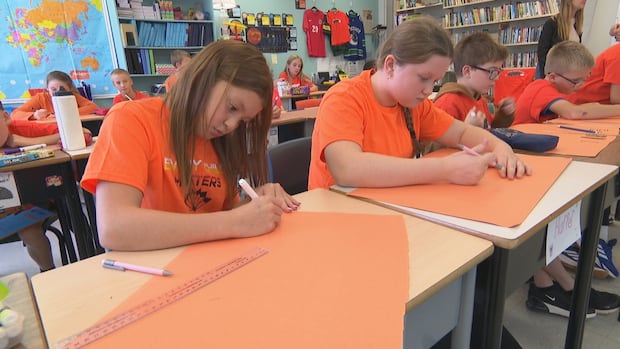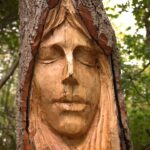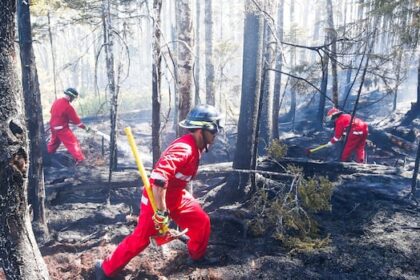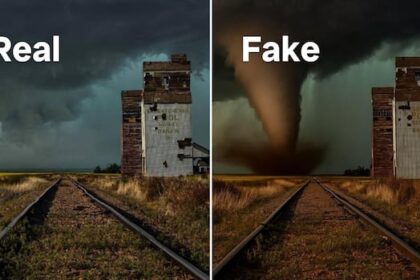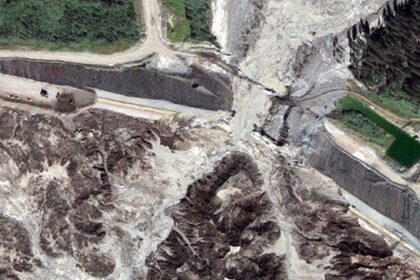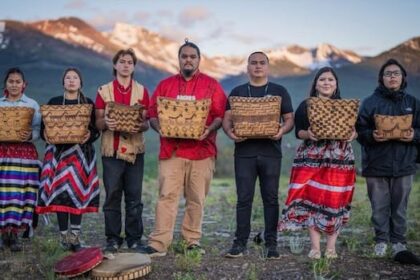PEIStudents across the Island are seeing more Indigenous teachings become a part of their school curriculum. Of the 94 calls to action in the Truth and Reconciliation Commission’s final report, 12 focus on education. 12 calls to action in Truth and Reconciliation Commission report focus on educationStephen Brun · CBC News · Posted: Oct 01, 2025 5:00 AM EDT | Last Updated: 3 hours agoStudents at Mount Stewart Consolidated School in P.E.I. have been learning more about Indigenous culture and issues as part of a provincewide effort to include such topic in the curriculum. (Rob LeClair/CBC)Wearing orange shirts, students at Mount Stewart Consolidated School in eastern Prince Edward Island are handing in their essays about what truth and reconciliation means to them. They’ve been learning about Indigenous traditions and culture in class, as well as topics like the so-called Sixties Scoop and the legacy of residential schools. These students say it’s important education, given that Tuesday marked the National Day for Truth and Reconciliation — but also because of the high Indigenous population at Mount Stewart Consolidated, thanks to its proximity to Abegweit First Nation. “It’s a really important part of history,” said Grade 8 student Autumn Long. “I think that it should be taught in greater detail… to everybody, and in a lot more schools.”Autumn Long, a Grade 8 student at Mount Stewart Consolidated School, reads her essay about what truth and reconciliation mean to her. (Rob LeClair/CBC)While the programming takes on extra significance this week, it’s no accident that these students and others across the country are seeing more Indigenous teachings become a part of their school curriculum.This year marks a decade since the Truth and Reconciliation Commission released its final report.Of the 94 calls to action it contained, 12 focused on education, including a mandate that students from kindergarten to Grade 12 across the country learn about Indigenous culture and history. Some Indigenous groups say P.E.I. is one of the provinces that has done the most work to meet that call — but that even more needs to be done to educate students about Indigenous subject matter. Jamie Thomas, director of culture and tourism for Lennox Island First Nation, says Indigenous lessons can be expanded to other school courses, not just social studies. (Tony Davis/CBC)”If we were to educate our kids at the school level, but then that education is shared at home around the dinner table… it would just be a completely different world,” said Jamie Thomas, the director of culture and tourism for Lennox Island First Nation. “I think we could do a little bit better than just one specific section. I think we can infuse our curriculum and our Mi’kmaw ways of being and our traditional life into everything… that we offer in our education system. We just need to get there.” We’d rather be spoken about in a way that’s respectful to our culture than not being spoken about at all.— Bradley Cooper, Native Council of P.E.I.Indigenous teaching is currently part of the P.E.I. Department of Education and Early Years’ social studies curriculum. The lessons and activities are set out by an education advisory committee that’s made up of Indigenous educators, members of the two First Nations communities on the Island, and staff with the Mi’kmaq Confederacy of P.E.I. and L’nuey. Lesson plans involve various exercises, and Indigenous elders visit classrooms to conduct smudging ceremonies and pass along some teachings. “It’s not just learning it in a textbook, it’s not just watching a video; it’s the actions that go with it. What are we going to do to make a difference and how are we going to collaborate with each other?” said Paulette LeBlanc, the provincial leader for French and immersion social studies for grades 7-12. “Having the kids more involved, I think the students will be more engaged and have the right information and know where to find their sources [to] learn about different topics.” WATCH | 10 years since Truth and Reconciliation Commission released calls to action:10 years since Truth and Reconciliation Commission released calls to actionThis week marks ten years since the Truth and Reconciliation Commission created its calls to action to address the dark legacy of residential schools in Canada. CBC Vancouver’s Indigenous Affairs reporter Wawmeesh Hamilton reports on what’s changed since then.Bradley Cooper, political adviser with the Native Council of P.E.I., said Indigenous education has improved greatly in Island schools because the province’s small population allows for swift public consultation. He echoed Thomas’s comments that the curriculum could be expanded to subjects other than just social studies, including science and even physical education. But Cooper said it’s important to note that teachers can still take a larger role in the curriculum, rather than asking Indigenous people to take on the teaching themselves. Some teachers are hesitant to talk about Indigenous issues in the classroom out of fear that they’ll be misinterpreted, says the Native Council of P.E.I.’s Bradley Cooper. (Rob LeClair/CBC)”One of the biggest areas that we’re finding a lot of hesitancy with is the idea that there [are] a lot of non-Indigenous peoples who don’t feel comfortable or understanding of being able to teach it the correct way. There’s fear that [if] they say the wrong thing, that it may come across as harming their job,” he said. “We’d rather be spoken about in a way that’s respectful to our culture than not being spoken about at all. We’ve gone through a long history of not being spoken about, not being addressed.” From the province’s perspective, those efforts are well underway, and more teachers are taking it upon themselves to enrich their own knowledge. “The teachers always want more information, more content, more training. There’s never enough, for sure, for every subject that we teach,” LeBlanc said. “Wanting to learn more, I think, made a difference in teachers having what they need to actually teach the content.” ‘A much better Canada’Some of the Indigenous groups said they’d like schools to put more emphasis on placing historical issues into the current context. ‘It really comes back to the one-on-one conversations, that interpersonality that’s core to Indigenous peoples,’ says Cooper. (Tony Davis/CBC)If students can better understand how things like residential schools are still affecting communities today, said Cooper, it would help improve relationships between non-Indigenous and Indigenous people on the Island. “It really comes back to the one-on-one conversations, that interpersonality that’s core to Indigenous peoples,” he said. “That’s where the classrooms are starting to move towards — different groups of diverse students of all different backgrounds talking, breaking down these social barriers, being able to lead a path forward to a much better Canada than has ever been seen before. “That’s what gets us really excited.”ABOUT THE AUTHORStephen Brun is the copy editor for digital news at CBC Prince Edward Island. A graduate of UPEI and Holland College, he has been a writer and editor for a number of newspapers and websites across Canada for nearly two decades. You can reach him at stephen.brun@cbc.ca.With files from Delaney Kelly
P.E.I. schools are leaders in Indigenous education, but the work is far from finished
